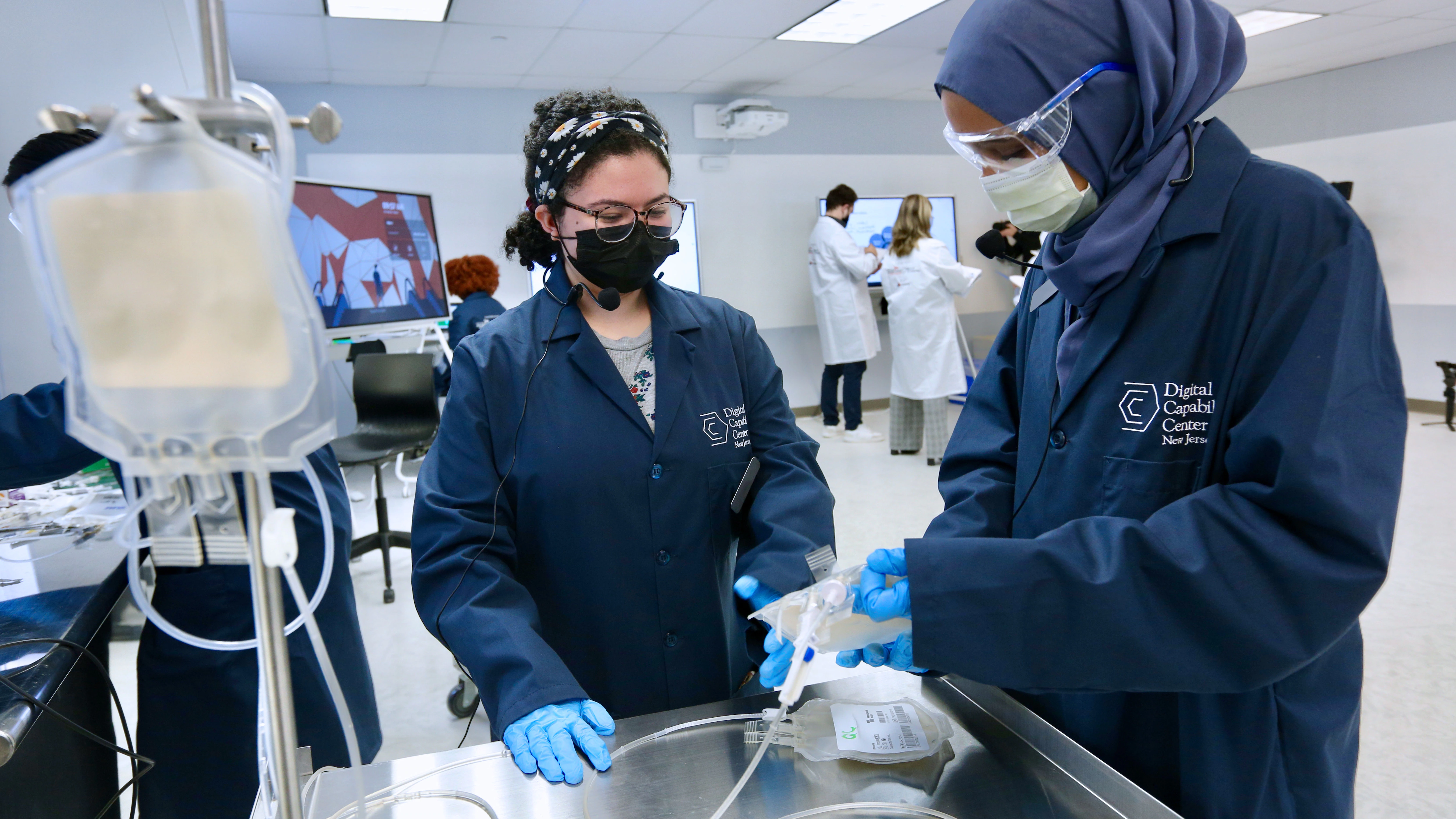New McKinsey center helps clients build capabilities in cell and gene therapy technology
One of New Jersey’s fastest-growing industries is life sciences. Already home to some of the world’s largest biopharma companies, the state is now also home to our newest Digital Capability Center. Dedicated to life sciences with a focus on cell and gene therapies, the center was developed in partnership with the New Jersey Innovation Institute and is operated by BioCentriq.
McKinsey operates 12 such facilities globally. They’re immersive learning environments where people can develop new skills by experimenting with digital technologies, explore new ways of working that will be critical to success, and plan the transformation of their operations both within and beyond their own walls.
Cell and gene therapies are next-generation treatments for a number of diseases. Whereas traditional medicines often require repeated dosages, sometimes with negative side effects, these new therapies are individualized to the patient, offering potentially permanent benefits. In lay terms, cell and gene therapies restore, alter, or replace cells or genes in the body to prevent, treat, and sometimes cure diseases—some of which were previously incurable. Often, they are effective in a single dose.
Twenty-three gene therapies have been FDA-approved with promising results for treating diseases including blood cancers, hemophilia, congenital blindness, and spinal muscular atrophy, which is the leading genetic cause of death in infants.
“Five years ago these treatments were really just ideas being tested in very small clinical trials,” explains McKinsey partner Katie Kelleher, who along with partner Andrea Gennari and a team of experts established the center. “Now they are the fastest-growing area in therapeutics, and the industry is beginning to commercialize them. But they are very laborious, complex, and expensive to produce and many businesses aren’t ready to do this.”
This is where the new Digital Capability Center can help. “As life-sciences companies everywhere are under pressure to hire talent and grow quickly, while improving quality and reliability,” says Andrea, “we can help them upskill people in operational excellence and transform their use of technology to enable new performance highs.”

By using virtual reality technologies, operators can train people on new procedures without requiring the actual equipment or supervisors, who can focus on production.
In particular, the new facility simulates the autologous CAR-T manufacturing process, a therapy used to treat cancer. In it, cells are taken out of a patient at a hospital, transported to a lab where they are purified and modified, and then injected back into that same patient.
“It’s a complicated, weeks-long process requiring highly skilled technicians,” explains Emily Simon, a McKinsey solution manager. “For example, the cells have to be frozen in liquid nitrogen during transportation to ensure stasis.” A variety of demos in the lab show how digital technologies can improve effectiveness at different points of the process. One use case focuses on how to optimize yield through advanced analytics, which can increase output through more productive cell growth or greater cell viability in the lab.
“Hundreds of factors can influence yield,” says Emily. “From the attributes of the raw materials—the serums and buffers that contain your cells—to the health of the patient who produced the cells, to factors of the process itself: temperature, pH, oxygen level.” Predictive modelling using advanced analytics can help a lab technician forecast potential issues, identify root causes, and identify the ideal conditions for growing new replacement cells.
When you see the digital technologies brought to life, you can truly grasp their full potential.
A recent attendee of our cell and gene therapy Digital Capability Center
In another use case, augmented- and virtual-reality technologies help train lab technicians in fundamental skills, such as changing cell-culture media. They can also be used to provide a refresher course for complex processes by practicing first with a virtual version of the equipment; this allows equipment and operators to stay focused on the actual production.
The programs range from half-day workshops for leaders showcasing “what the future could be” to intensive four-day problem-solving, skill-building classes for teams undertaking a complete transformation.
The center has already hosted several clients, creating moments of insight and impact that perhaps can only be realized in this cutting-edge, hands-on environment. “When you see the digital technologies brought to life,” a recent participant observed, “you can truly grasp their full potential.”








Gloss